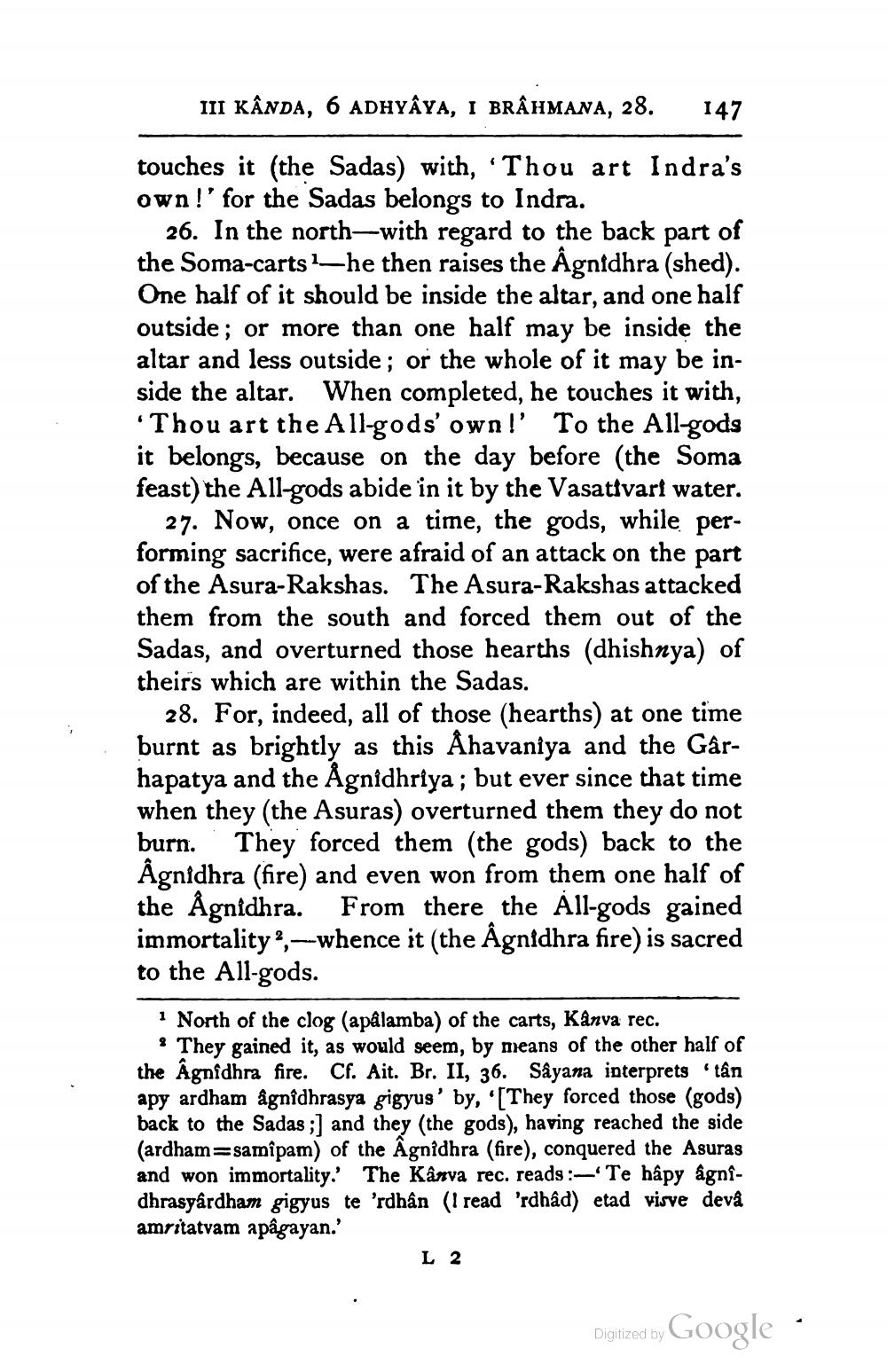________________
III KÂNDA, 6 ADHYAYA, I BRÂHMANA, 28.
147
touches it (the Sadas) with, “Thou art Indra's own!' for the Sadas belongs to Indra.
26. In the north-with regard to the back part of the Soma-carts?he then raises the Âgnidhra (shed). One half of it should be inside the altar, and one half outside; or more than one half may be inside the altar and less outside ; or the whole of it may be inside the altar. When completed, he touches it with,
Thou art the All-gods' own!' To the All-gods it belongs, because on the day before (the Soma feast) the All-gods abide in it by the Vasativari water.
27. Now, once on a time, the gods, while performing sacrifice, were afraid of an attack on the part of the Asura-Rakshas. The Asura-Rakshas attacked them from the south and forced them out of the Sadas, and overturned those hearths (dhishnya) of theirs which are within the Sadas.
28. For, indeed, all of those (hearths) at one time burnt as brightly as this Åhavaniya and the Gârhapatya and the Agnidhriya; but ever since that time when they (the Asuras) overturned them they do not burn. They forced them (the gods) back to the Âgnidhra (fire) and even won from them one half of the Ågnidhra. From there the All-gods gained immortality', --whence it (the Âgnfdhra fire) is sacred to the All-gods.
1 North of the clog (apalamba) of the carts, Kanva rec.
? They gained it, as would seem, by means of the other half of the Âgnidhra fire. Cf. Ait. Br. II, 36. Såyana interprets 'tân apy ardham ågnidhrasya gigyus' by, They forced those (gods) back to the Sadas ;] and they (the gods), having reached the side (ardham=samipam) of the Agnidhra (fire), conquered the Asuras and won immortality.' The Kânva rec. reads :- Te hâpy ägnidhrasgårdham gigyus te 'rdhân (I read 'rdhâd) etad visve devå amritatvam apagayan.'
L2
Digitized by Google




